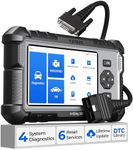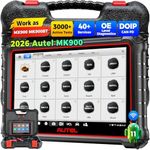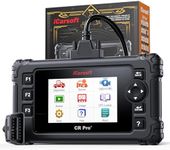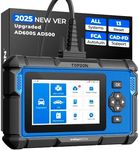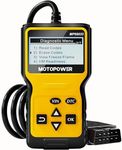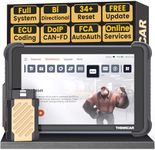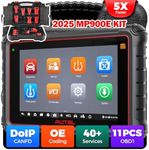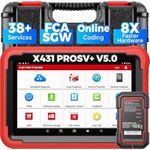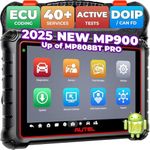Buying Guide for the Best Obd2 Scanners
Choosing the right OBD-2 scanner can be a game-changer for diagnosing and fixing issues with your vehicle. An OBD-2 scanner is a device that connects to your car's onboard diagnostics system to read and clear error codes, monitor performance, and provide real-time data. To find the best fit for you, it's important to understand the key specifications and how they align with your needs. Here are the main specs to consider when selecting an OBD-2 scanner.CompatibilityCompatibility refers to whether the OBD-2 scanner can connect and communicate with your specific vehicle make and model. This is crucial because not all scanners work with all cars. Generally, OBD-2 scanners are compatible with vehicles manufactured after 1996 in the US, but it's always best to check the scanner's compatibility list. If you have multiple vehicles or plan to use the scanner on different cars, look for a model with broad compatibility.
FunctionalityFunctionality encompasses the range of features and capabilities the OBD-2 scanner offers. Basic models can read and clear error codes, while more advanced scanners provide live data, freeze frame data, and even advanced diagnostics like ABS, SRS, and transmission codes. If you're a DIY enthusiast or a professional mechanic, you might need a scanner with comprehensive functionality. For occasional use, a basic model might suffice.
User InterfaceThe user interface is how you interact with the OBD-2 scanner, including the display and controls. A clear, easy-to-read screen and intuitive navigation can make a big difference in usability. Some scanners have simple monochrome displays, while others offer color screens with graphical data. Consider how comfortable you are with technology and choose a scanner with a user interface that matches your comfort level.
ConnectivityConnectivity options determine how the OBD-2 scanner communicates with other devices. Traditional scanners use a wired connection to the vehicle's OBD-2 port, but many modern models offer Bluetooth or Wi-Fi connectivity, allowing you to use a smartphone or tablet as the display. If you prefer using your mobile device for convenience and additional features, look for a scanner with wireless connectivity.
Update and SupportUpdate and support refer to the manufacturer's commitment to providing software updates and customer support. Regular updates ensure that the scanner can handle new vehicle models and diagnostic codes. Good customer support can help you troubleshoot issues and get the most out of your scanner. Check if the manufacturer offers free updates and has a reputation for responsive support.
Data Logging and StorageData logging and storage capabilities allow the OBD-2 scanner to record and save diagnostic data over time. This can be useful for tracking intermittent issues or comparing performance data. Some scanners have internal memory, while others rely on external storage or cloud services. If you need to keep detailed records, look for a scanner with robust data logging and storage options.
Build Quality and DurabilityBuild quality and durability are important if you plan to use the OBD-2 scanner frequently or in a professional setting. A well-built scanner can withstand drops, impacts, and the rigors of a workshop environment. Look for models with sturdy construction and positive user reviews regarding their durability. If you need a scanner for occasional use, build quality might be less of a concern.


